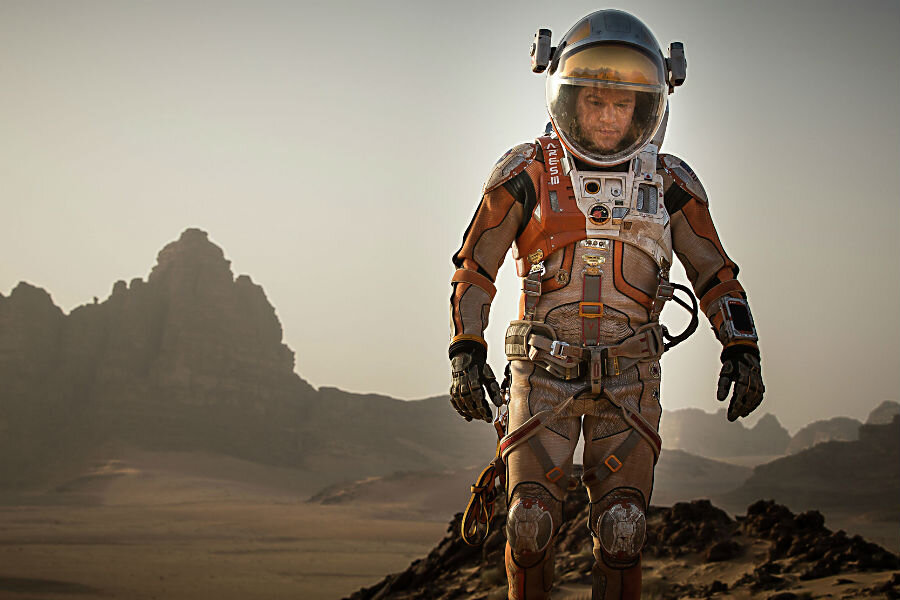Red Planet spuds? NASA really does want to grow potatoes on Mars
Loading...
In a case of life imitating art, NASA, like the fictional botanist Mark Watney, is experimenting with growing Martian potatoes, though so far only in the Mars-like soil of the Peruvian desert. Growing food will be critical to long-term human missions to Mars.
"In 'The Martian,' Mark Watney uses the Martian soil to grow potatoes in the controlled environment of the 'Hab,'" NASA writes in a blog post. "In reality, the soil on Mars actually does have the nutrients plants would need to survive on Mars!"
NASA and scientists at the Lima-based International Potato Center are testing 65 of the 4,500 varieties of Peruvian potatoes to determine which are best suited for deep-space cultivation. Potatoes are adaptable to many climates and are considered highly nutritious, with carbohydrates, protein, vitamin C, iron, and zinc.
"It's got to be a Martian potato that tastes good," Julio Valdivia-Silva, a Peruvian astrobiologist with NASA, told the Wall Street Journal in Peru. "It's a big challenge to take a living organism somewhere else. We've never done this before," he said.
Peru is home to the experiment because of its Pampas de La Joya Desert, one of the driest places on Earth, as the Journal explains. It is part of South America's Atacama Desert, which is prized by NASA for its Mars-like conditions, particularly its dirt.
But while it's one thing to figure out how to grow potatoes in Martian soil, which has many of the essential plant nutrients, such as iron, zinc, potassium, and nitrogen, it is another to grow them in the hostile environment on the Red Planet. On Mars, the average temperature is minus 84 degrees Fahrenheit. There are high levels of radiation and dust storms, and an atmosphere, 100 times thinner than Earth's, made mostly of carbon dioxide.
"I've done tests under stressful conditions, but never so stressful," Walter Amoros, a scientist with the International Potato Center, told the Journal. "I don’t think they'll grow in the open air [on Mars]. They will have to plant them under controlled conditions, in domes," he said.
The scientists will first plant the spuds in more than 1,300 pounds of soil transported from the desert to Lima. If they can grow in the soil, the potatoes will then be tested in an environment that will simulate the hostile conditions of Mars.
If Martian soil can't sustain potato farming, it might be possible to grow the spuds without soil by hydroponics and aeroponics, the Journal reported. Hydroponics deliver nutrients in water, while aeroponics deliver them by air.
Potatoes are not NASA's first experiment with growing space food. Astronauts aboard the International Space Station (ISS) have grown plants to better understand how they fare in zero gravity.
Most recently, American astronaut Scott Kelly coaxed zinnias to blossom in January as part of a NASA experiment called "Veggie," which aspires to grow tomatoes aboard the ISS in 2018. Other flowering plants that have blossomed in space, according to NASA, include wheat, barley, brassicas, and peas, grown more than a decade ago on the Russian Mir space station and on the ISS.
"I think having this fresh food source available is going to be critical," Gioia Massa, a project scientist at NASA Kennedy Space Center and the brainchild behind Veggie, told The Christian Science Monitor in November 2015.
"The farther and longer humans go away from Earth, the greater the need to be able to grow plants for food, atmosphere recycling and psychological benefits," Dr. Massa said in a NASA announcement of the Veggie experiment.







